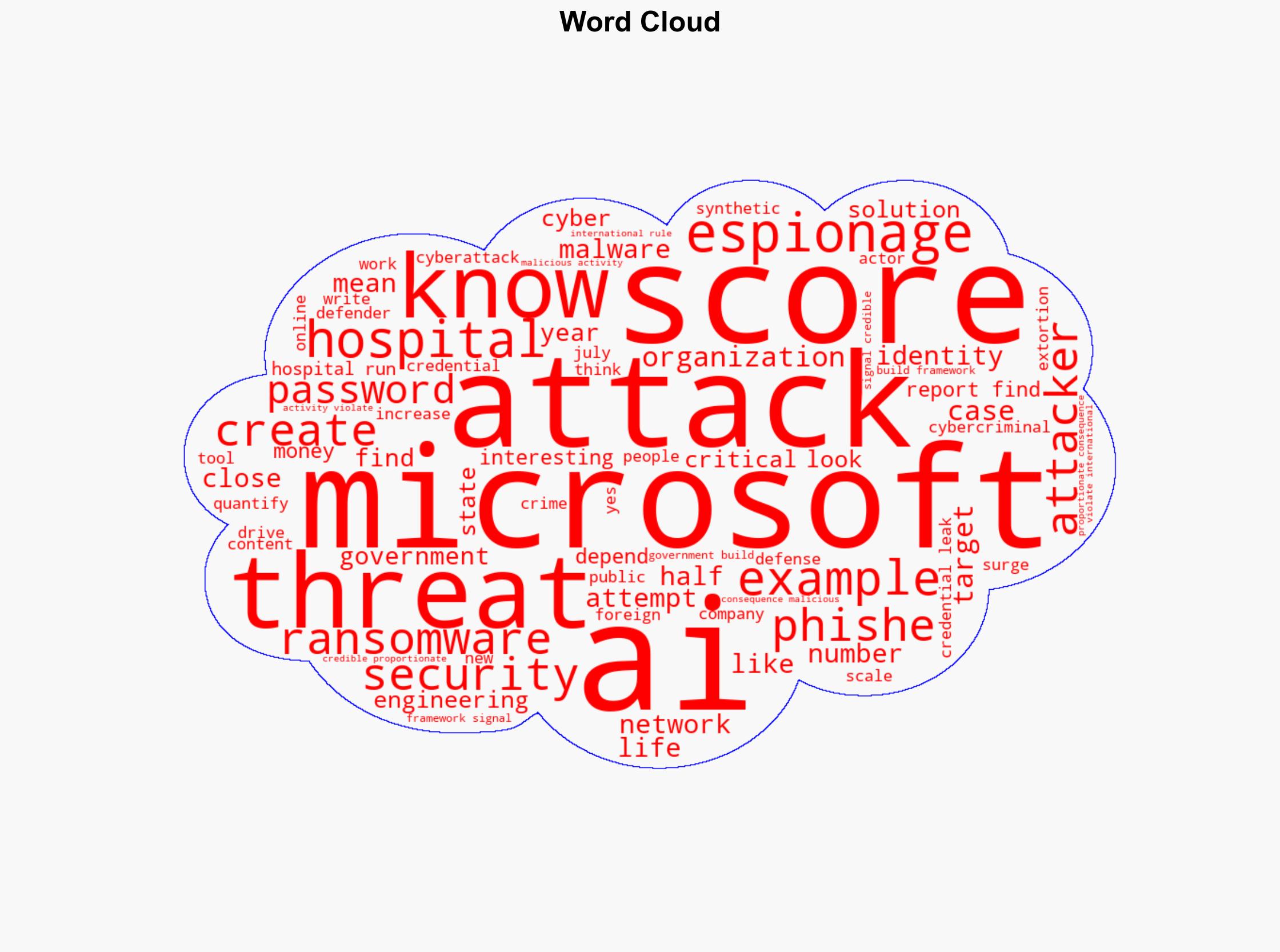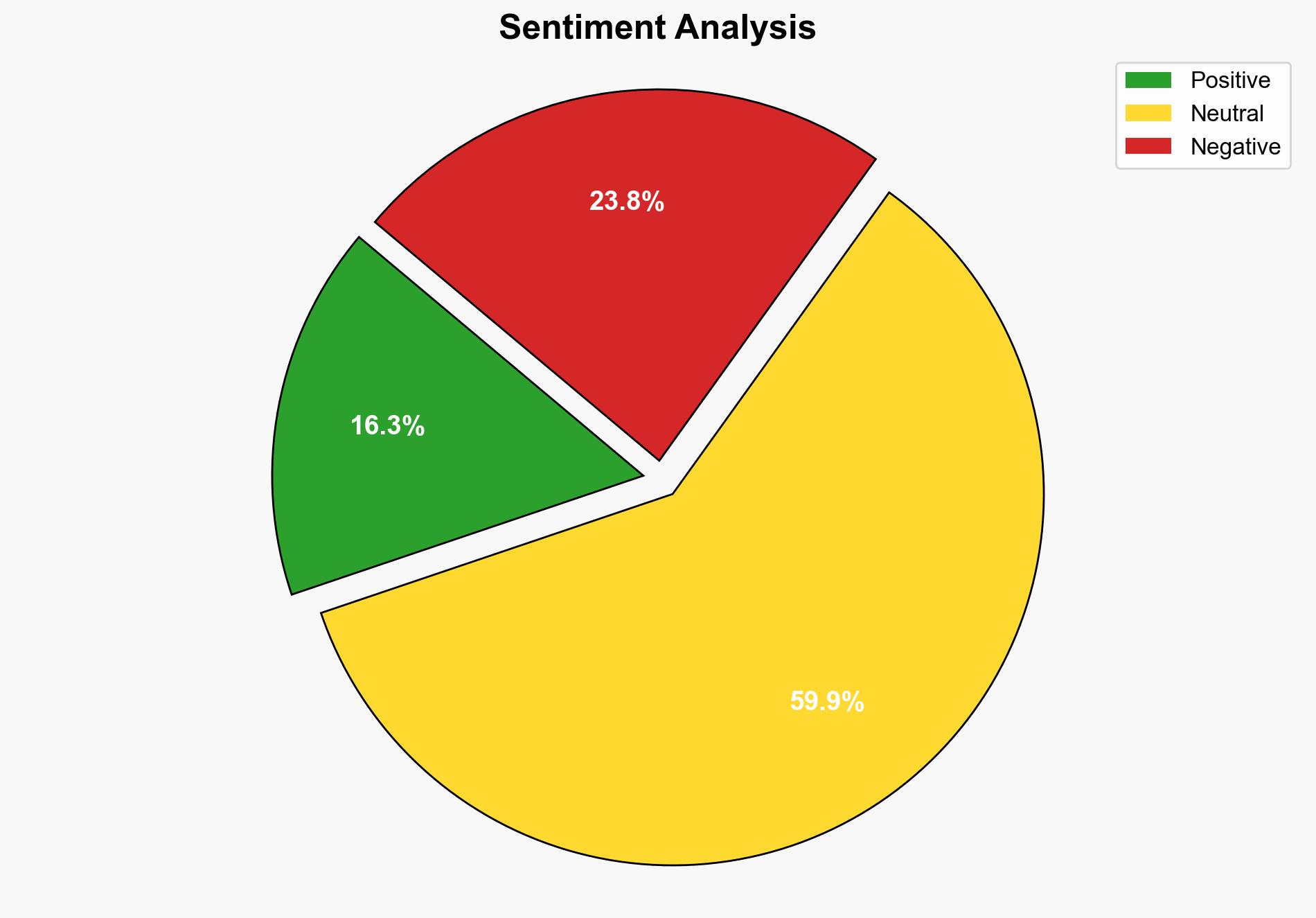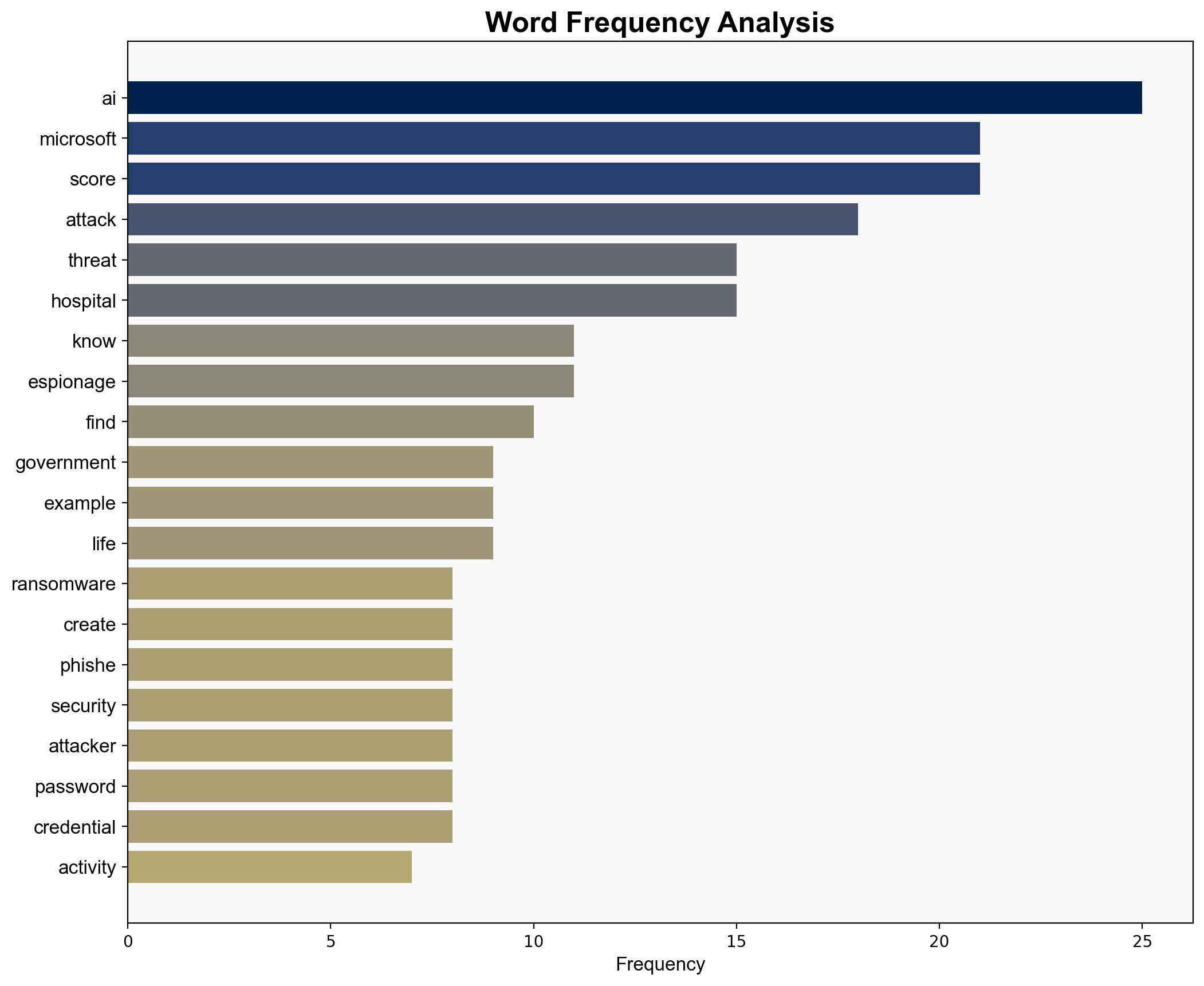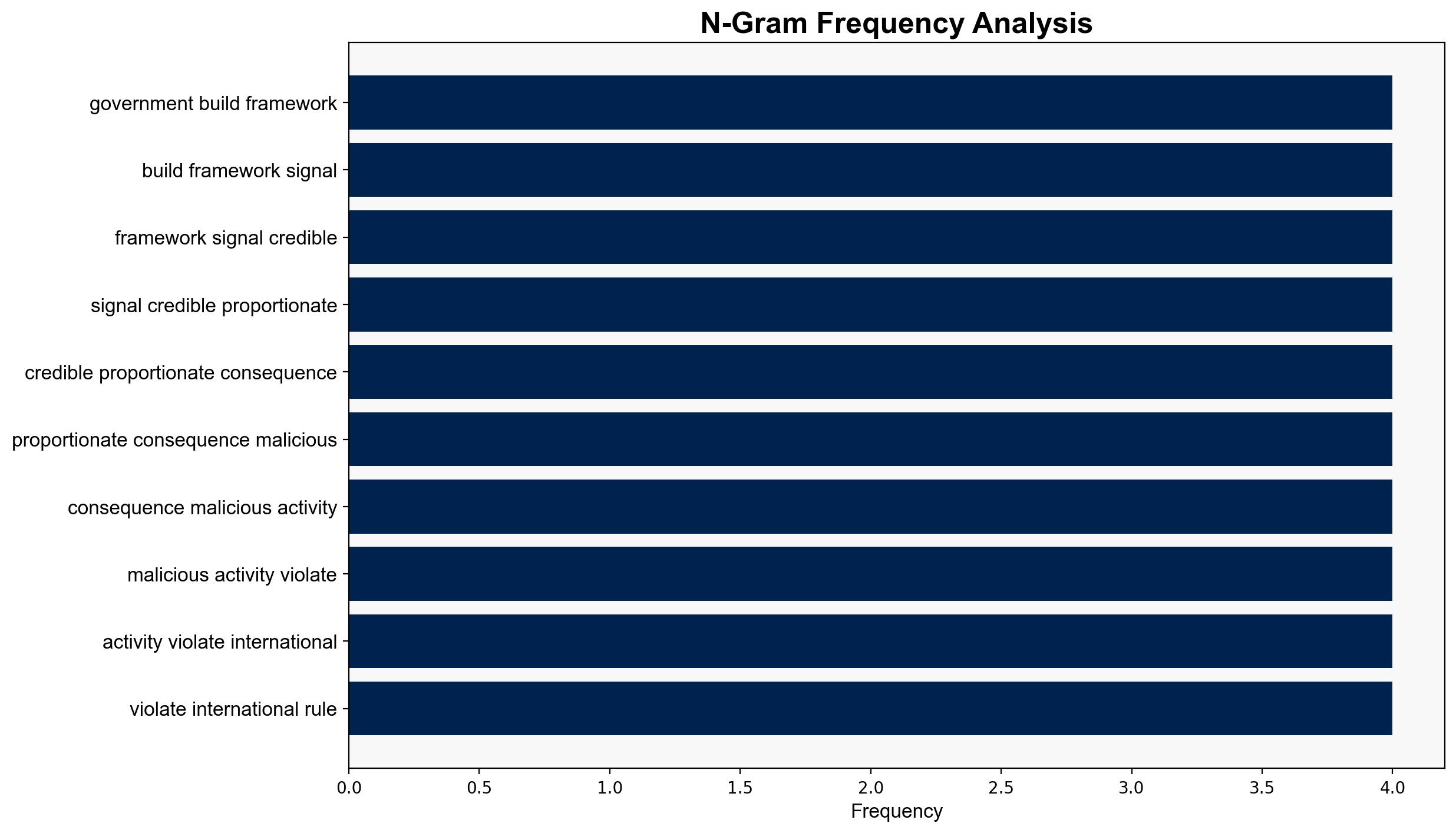Extortion and Ransomware Drive Over Half of Cyberattacks Sometimes Using AI Microsoft Finds – Slashdot.org
Published on: 2025-10-19
Intelligence Report: Extortion and Ransomware Drive Over Half of Cyberattacks Sometimes Using AI Microsoft Finds – Slashdot.org
1. BLUF (Bottom Line Up Front)
The strategic judgment indicates a high confidence level that the integration of AI into cybercriminal activities significantly enhances the scale and sophistication of cyberattacks, particularly extortion and ransomware. The most supported hypothesis suggests that AI is primarily used to automate and amplify existing attack vectors, rather than creating entirely new forms of cyber threats. Recommended action includes strengthening AI-driven defense mechanisms and fostering international collaboration to address the evolving threat landscape.
2. Competing Hypotheses
1. **Hypothesis A**: AI is primarily used by cybercriminals to enhance the efficiency and scale of existing attack methods such as phishing and ransomware, leading to a significant increase in the volume of attacks.
2. **Hypothesis B**: AI is being leveraged to develop entirely new types of cyber threats that are fundamentally different from traditional methods, posing unprecedented challenges to cybersecurity defenses.
Using structured analytic techniques such as ACH 2.0, Hypothesis A is better supported due to the evidence of AI being used to automate phishing and create synthetic content, which aligns with known attack patterns. Hypothesis B lacks substantial evidence of novel threat types emerging solely due to AI.
3. Key Assumptions and Red Flags
– **Assumptions**: It is assumed that AI capabilities are accessible and usable by a wide range of cybercriminals. Additionally, there is an assumption that AI advancements will continue to outpace defensive measures.
– **Red Flags**: The report heavily relies on data from Microsoft, which may have inherent biases or limitations. There is also a lack of specific examples of new AI-driven threat types, which could indicate a gap in intelligence.
4. Implications and Strategic Risks
The integration of AI into cyberattacks could lead to a rapid escalation in the frequency and impact of cyber incidents, overwhelming current defense systems. Economically, this could result in increased costs for cybersecurity measures and potential financial losses from successful attacks. Geopolitically, the use of AI by nation-states like Russia, China, Iran, and North Korea could heighten tensions and lead to retaliatory actions. Psychologically, the sophistication of AI-driven attacks could erode public trust in digital systems.
5. Recommendations and Outlook
- Invest in AI-driven cybersecurity tools to detect and mitigate threats more effectively.
- Enhance international cooperation to establish norms and frameworks for AI use in cyberspace.
- Scenario-based Projections:
- Best: Successful international collaboration leads to robust AI defense systems.
- Worst: AI-driven attacks outpace defensive capabilities, causing widespread disruption.
- Most Likely: Incremental improvements in AI defenses keep pace with evolving threats.
6. Key Individuals and Entities
– Microsoft (as the primary source of the report)
– Nation-states: Russia, China, Iran, North Korea
7. Thematic Tags
national security threats, cybersecurity, counter-terrorism, regional focus





